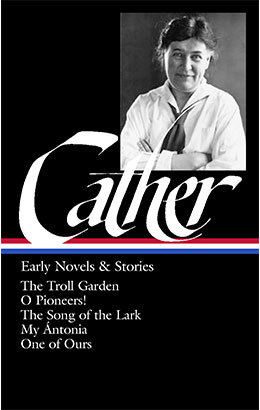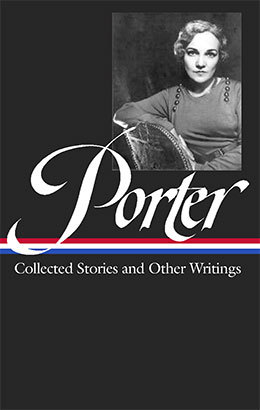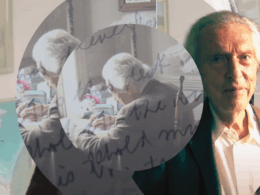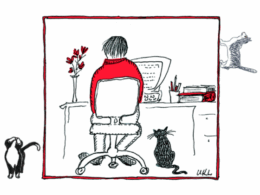Though its role in literary history was little remarked upon until recently, the 1918–19 flu epidemic was a formative experience for a generation of American writers.
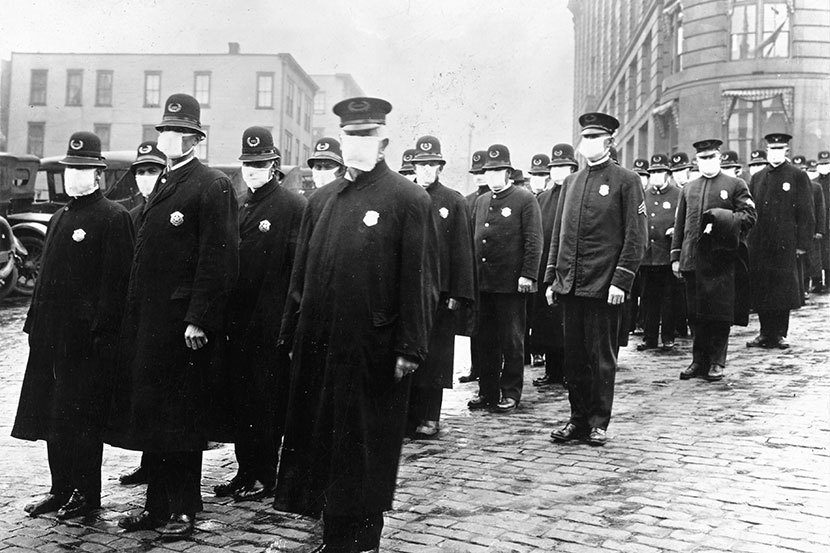
With the coronavirus dominating everyone’s lives right now, people who read are understandably looking to books in order to cope. Boccaccio’s Decameron, Daniel Defoe’s A Journal of the Plague Year, and The Plague by Albert Camus are all enjoying renewed currency, with first-time readers discovering, among other things, that such seemingly of-the-moment concepts as “social distancing” and self-quarantining have actually been practiced in various forms for hundreds of years.
American literature offers its own touchstone works at a time like this — but some of the more obvious contenders, like Edgar Allan Poe’s grisly 1842 classic “The Masque of the Red Death,“ may not be quite the sustenance beleaguered souls in 2020 are looking for. (A case could be made that Poe’s heedless Prince Prospero has his modern-day counterparts in the Spring Break hedonists who flocked, notoriously, to Florida beaches in the past couple of weeks.) And then there’s The Scarlet Plague (1912), a relatively obscure late Jack London novel in which an incurable new disease wipes out most of humanity . . . early in the twenty-first century. (An eBook billing itself as the “Special Coronavirus Edition” of The Scarlet Plague was briefly available earlier this year before being withdrawn, presumably on grounds of taste.)
But the most relevant—or at least the most commonly cited—precedent for what we’re all living through right now came just over one hundred years ago. In early March 1918, the first case of “Spanish flu” was recorded at a U.S. Army camp in Kansas. That marked the beginning of the influenza epidemic that would subsequently claim between 50 and 100 million lives worldwide, making it, in the words of a 2018 London Review of Books article, “the most deadly pandemic in human history.”
An estimated 675,000 Americans died of the flu or pneumonia in 1918–19, and it became a formative experience for a generation of American writers. Mary McCarthy was orphaned after both her parents succumbed, which led to the unhappy childhood she recounted in Memoirs of a Catholic Girlhood. Thomas Wolfe never got over the loss of his brother Ben; barely fictionalized, Ben’s death is a key episode in Wolfe’s debut, Look Homeward, Angel (1929). A section of Wallace Stegner’s autobiographical 1943 novel The Big Rock Candy Mountain depicts the flu’s ravages among homesteaders in the American Northwest and across the border in Canada. William Carlos Williams, working as a family doctor in New Jersey, reported making up to sixty calls a day; he later wrote, “we hadn’t a thing that was effective in checking that potent poison that was sweeping the world.”
A quartet of works included in the Library of America series show the 1918–19 epidemic being turned into vivid fictional art. It doesn’t seem like a stretch to suggest that each of them will eventually resonate with readers in new ways as a result of the present crisis:
• Willa Cather’s Pulitzer Prize–winning 1922 novel One of Ours unforgettably depicts an outbreak of the flu on an American troop ship during World War One. For verisimilitude (in particular, some hair-raising descriptions of the disease’s effects on healthy young bodies), Cather relied on a firsthand account by the doctor who treated her for the flu in the fall of 1919. In a fascinating reconsideration of the novel for Lapham’s Quarterly in 2018, Caterina Bernardini argues that the influenza scenes are critical to a book that relentlessly inquires into “the true worth and value of life,” and that they evoke in the reader “a stark sense of pity and sadness and of pure wondering.”
• In John O’Hara’s autobiographical long story “The Doctor’s Son” (1935), a teenage boy assisting a physician during the flu epidemic reaches maturity with a reckoning of just how arbitrary death can be. Reviewing the LOA collection of O’Hara’s short stories for The Christian Science Monitor in 2016, Charles Taylor said that “The undertow of [‘The Doctor’s Son’] . . . is a determination to get down exactly what he saw and to leave implicit what such sights wreaked on a young man’s psyche.”
• William Maxwell, whose mother died of the flu when he was ten, transmuted that experience into a classic short novel, They Came Like Swallows (1937), a heartrending depiction of a family that loses its emotional center.
• Twenty-eight-year-old Katharine Anne Porter nearly died from the flu in the fall of 1918, but the young Army lieutenant she was in love with wasn’t so lucky. Twenty years later the loss helped inspire her masterpiece, the novella “Pale Horse, Pale Rider.” In a 2003 history of the influenza crisis, America’s Forgotten Pandemic, Alfred W. Crosby praises “Pale Horse, Pale Rider” as “the most accurate depiction of American society in the fall of 1918 in literature,” noting Porter’s careful attention to the “crushing depression that so often followed Spanish influenza.”
Crosby’s reference to the travails that came after the flu is a sobering reminder of how much uncharted territory still lies ahead of us in 2020. But it’s also a reminder of fiction’s ability to give a human perspective on events that, for so many people, would have been all-but unimaginable—until just a few weeks ago.
